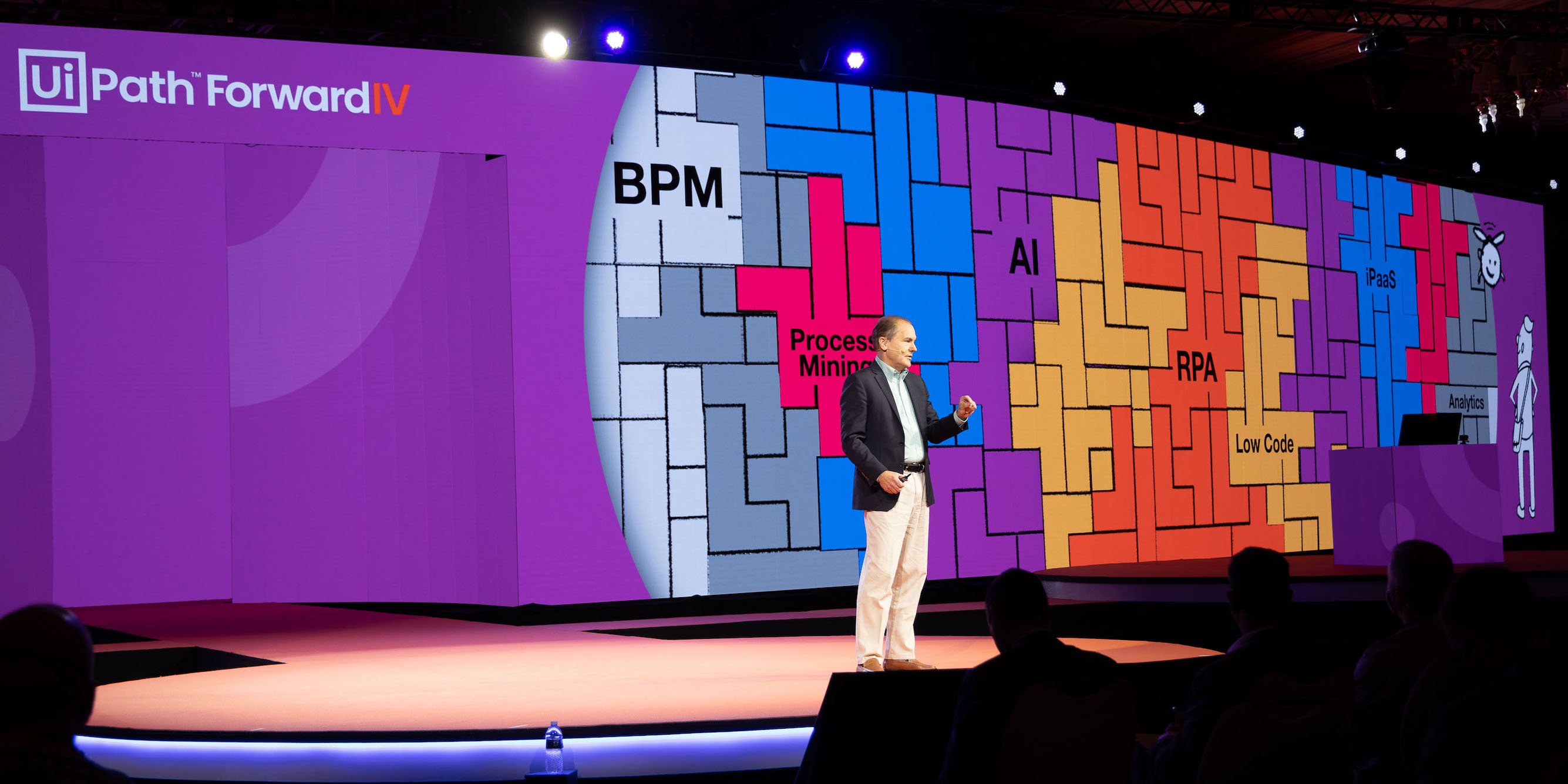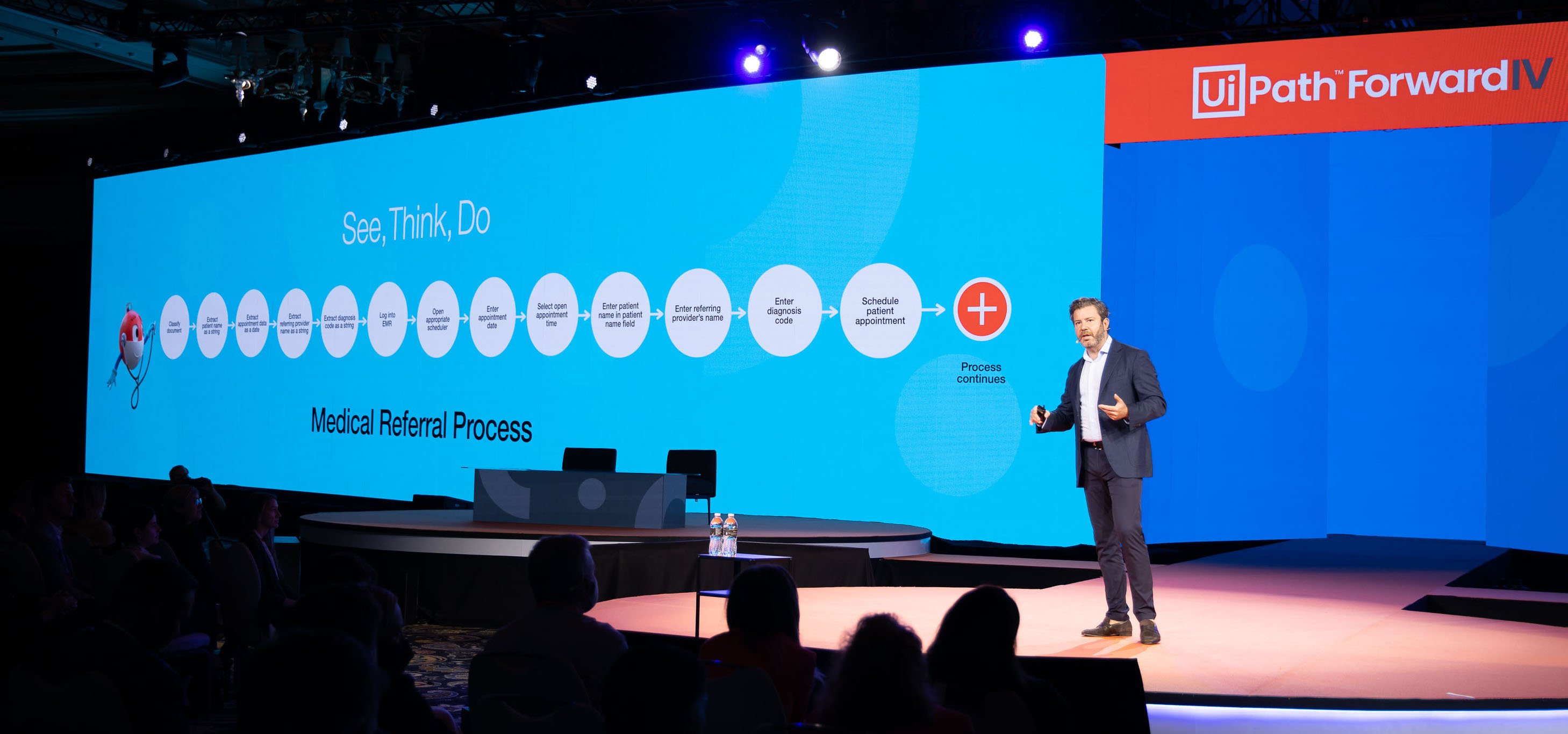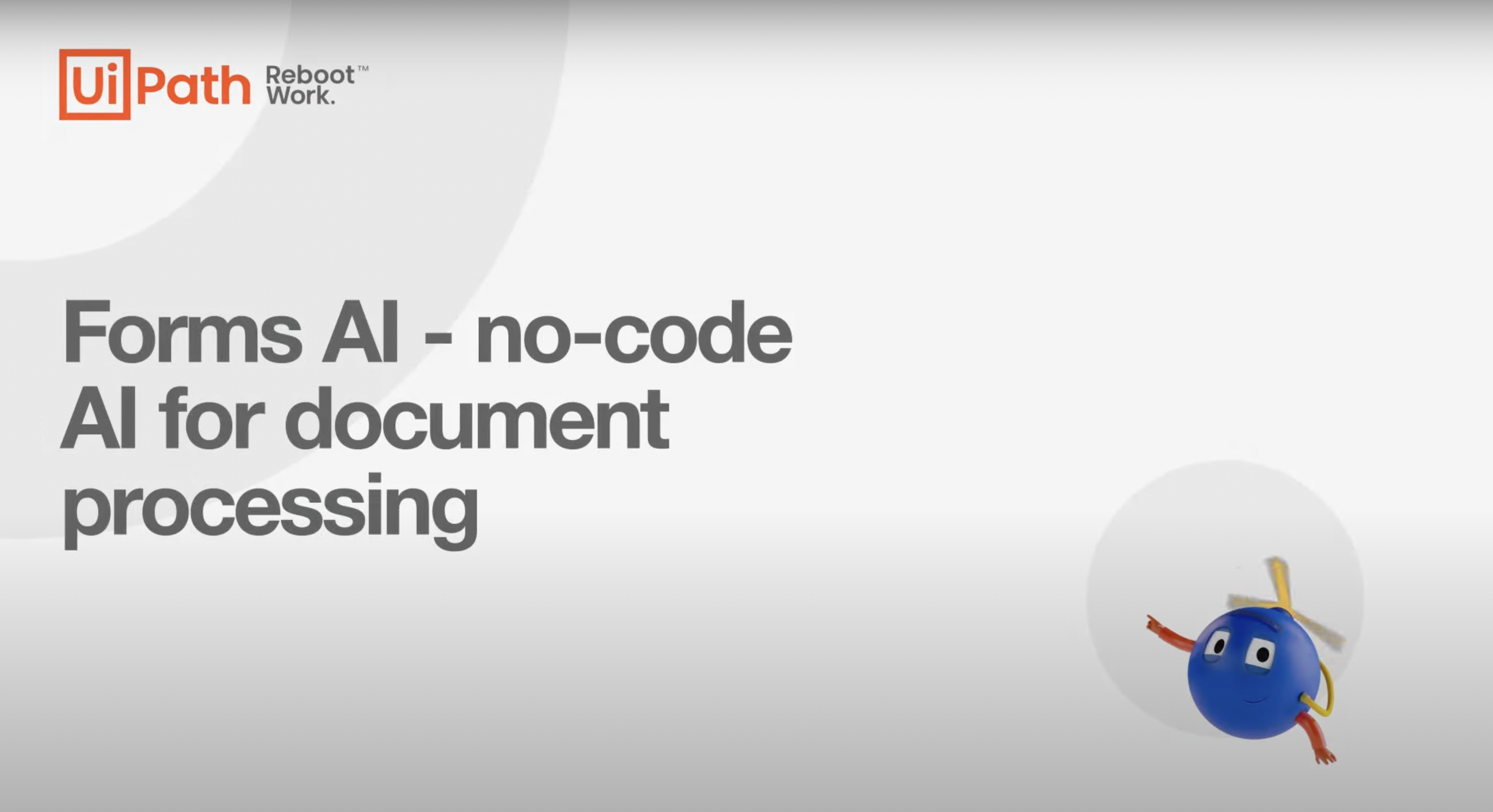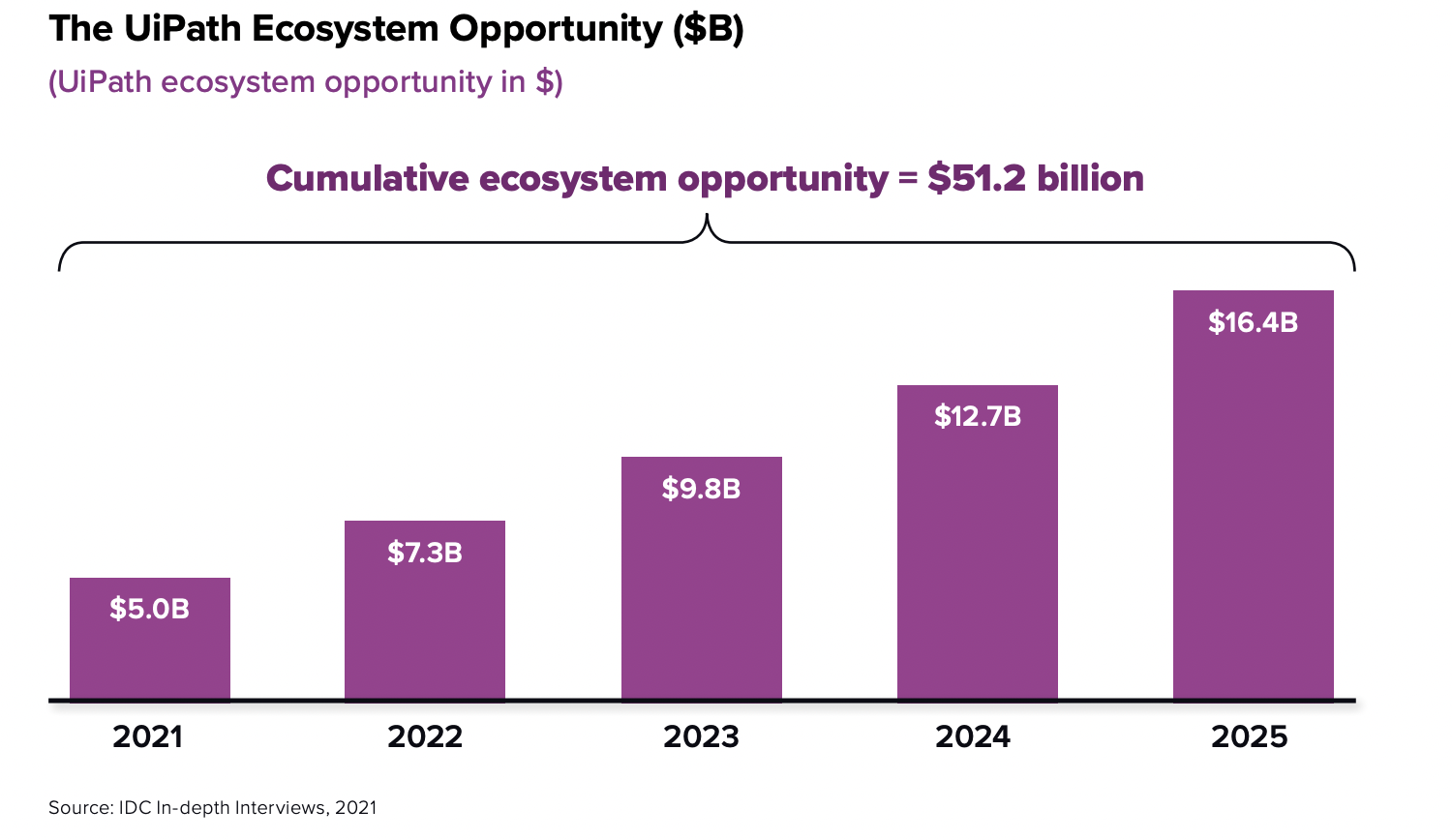Top 10 Automation Trends in 2022
Share at:

We'll take an in-depth look at each of these trends in a webinar on January 13, 2022. Save your spot and join me!
In 2022, automation will accelerate across the enterprise, throughout the C-suite, into new technologies. Here are the 10 trends you need to know to understand its momentum—and what it means for you.
Automation has never been a static category: rapid growth, constant innovation, broader adoption are all baked into its DNA. But in 2022, the category will move faster and farther than ever before.
We’ve identified 10 trends that we believe capture the gist of what’s to come. So without further ado, let’s take a look ahead.
And for more details on each of these trends, claim your free copy of the new "2022 Trends: Automation Accelerates" report.
Trend #1: CIOs take the reins on automation
Automation is now the top trend in tech (McKinsey). According to a recent Gartner survey, more than 80% of organizations say they’ll “continue or increase” automation spending this year. Now, chief information officers (CIOs) are stepping in to develop enterprise-level approaches to strategy, governance, and platform technology.
As investment grows, boards want to make sure it’s being spent wisely and strategically. So many of them are issuing ‘automation mandates.’ They want strategic and implementation plans that deliver a world-class enterprise-wide automation capability—along with centralized governance, visibility, and control.
By and large, CIOs are being tapped to deliver on these mandates. So, 2022 will see them focused on critical issues like:
What automation technology to standardize on
How to balance between centralized initiatives and individual ones
What organizational capabilities need to be built out
How best to ensure good governance, security, and quality
Beyond these questions, they’re also moving closer to the revenue side of the business, asking how automation might be used to support revenue growth and new business opportunities. Robotic process automation (RPA) already has a strong track record in revenue-centric operations like customer self-service, contact centers, and sales and marketing operations. (In fact, IDC projects that by 2025, RPA-driven economic benefits from revenues will almost equal economic benefits from cost savings and operational efficiencies.) Expect CIOs to build on revenue growth momentum through innovative programs that reimagine businesses and operating models with automation at the core.
Recommended reading: The CIO's Perspective on Automation
Trend #2: In the automation platform convergence battle, RPA wins over BPA, iPaaS, LCAP, and AI
'RPA-plus' platforms expand to integrate capabilities from adjacent business process automation technologies.
Perhaps you’ve noticed the quiet—but intense—battle going on for the soul of automation technology? Entrants from every option—business process automation (BPA), integration platforms as a service (iPaaS), low-code application platforms (LCAPs), artificial intelligence (AI) platforms and of course, end-to-end RPA platforms—have been vying to be the central platform around which the other technologies will orbit.
This year, the battle will come to a head as CIOs move to coordinate automation across the enterprise and coalesce around a single platform technology. And we believe that when the smoke clears, RPA—or more precisely, RPA-plus—will be the winner. Here’s why:
RPA adoption just keeps growing. In 2020, RPA was once again the fastest-growing segment of the enterprise software market, notching a 38.9% increase to hit $1.9 billion in revenues, according to Gartner*. Growth is being fueled not only by adoption, but also expansion across the enterprise. For example, as of September 2021, UiPath reported a dollar-based net retention rate of 144%, meaning that our average customer had spent 44% more with us over the prior year. RPA leads in UI automation—which is critical for automating a great many processes. UI automation is very hard to get right—which is why others have had to play catch-up.
Advanced RPA platforms incorporate enterprise-critical functionalities such as governance, low-code/no-code build environments, and support for “democratization” and scalability.
That’s not to say that RPA can do everything that other automation technologies can do—yet. So, this year, you can expect RPA platforms to follow two simultaneous paths.
First, look for them to move into adjacent categories with robust offerings deeply integrated into their existing platform. RPA platforms will be able to natively handle a broader range of use cases, expanding developers’ expressiveness—for instance, allowing them to take on long-running processes requiring richer user interfaces or higher-level AI and machine learning. RPA platforms will also focus on moving into the LCAP adjacency with new tools and shortcuts to help citizen developers build automations and applications.
Second, expect them to invest in interoperability and easy integrations with other automation technologies. Organizations can continue to use their current technology, if they so desire, while the RPA platform provides management and governance.
Both paths will allow RPA platforms to seize and hold their position as the core technology around which all other automation activities and technologies orbit—a strategy we call 'RPA-plus.'

Ted Kummert, Executive Vice President of Products and Engineering at UiPath, discussed 'RPA-plus' and the next trend (see below) at UiPath FORWARD IV. Watch the full replay of the keynote.
Trend #3: Automation moves to the top of the enterprise stack and powers a new engagement layer
Robots, not people, weave together applications, systems, and software—allowing processes to be re-imagined.
Today, large enterprises have an average of over 170 different applications that people must toggle between to get their work done. A huge amount of the average employee’s day is spent on low-value, “swivel-chair” work—a huge drain on both enterprise productivity and the human spirit.
Many organizations are addressing this problem by providing employees with digital desktop assistants, or as we call it, 'a robot for every person™.' In 2022, we’ll see leading-edge enterprises try something new: adding an “automation layer” at the top of their application stacks.
This layer will sit between workers and the enterprise systems and applications they need to get their work done. Robots, not people, will create digital joins between systems of record, and will take on repetitive tasks like inputting data from one system into another or opening and closing programs. It will contain connections and reusable components, a build environment, and maintenance and governance capabilities.
Through standardization, reusability, and centralized governance and management, this new layer can allow organizations to thoroughly reimagine their processes and quickly bring to life new approaches that free people from the burdens of technology fragmentation.
Trend #4: Just-in-time, task-based workflows emerge as alternatives to business-application-based workflows
First virtual assembly lines deliver ‘work-as-needed’ to people’s desktops.
Today people typically get work done within business applications: opening up Jira, moving to Workday, completing tasks in Salesforce, and so on. But in 2022, we’ll see the emergence of a new workflow paradigm. Instead of going to many separate business applications to get their work done, people will receive a flow of just-in-time tasks on their desktops, teed up for them by robots.
This approach shelters people from much of the complexity and fragmentation and frees them to focus on important and valuable work. They won’t have to waste their time opening, closing, and navigating within applications, or struggling to complete workflows that span multiple systems. And they won’t have to deal with the loss in productivity as they get up the learning curve on new or updated applications.
We think virtual assembly lines may have the same potential to unlock productivity in the digital world that manufacturing assembly lines once unlocked in the physical world. That may be the reason why IDC predicts that by 2024, “25% of new employee-facing application development will be displaced by codeless development of discrete tasks that are assigned just in time to workers paired with robot assistants.”
Trend #5: Automation centers of excellence (CoEs) step in to solve the AI deployment problem
CoEs cover the last mile to deliver higher success rates and ROI for AI initiatives.
In a recent study of AI professionals, 64% said it took their organizations at least a month to implement a new model—and 20% said, “6 months or more.” That’s a very long last mile.
Automation is proving to be an ideal choice for addressing this “last mile” problem in AI execution. Today’s enterprise-grade platforms allow models to be quickly inserted into workflows, so robots can access and apply them in real time. Human-in-the-loop feedback can be added to support continual model improvement, as can automated data extraction, transformation, and quality assurance (QA). Centralized monitoring, management, and full audit trails support governance and compliance.
Leading-edge companies are already using automation to put models into production and bring AI and machine learning (ML) into the front lines of actions, decision-making, and analysis. And increasingly they are asking automation CoE teams to expand their purview beyond process automation to also cover AI and ML deployment. Expect more automation CoEs to expand their scope into AI implementation—and to forge tighter alliances between themselves and AI and analytics CoEs in 2022.
Trend #6: ‘Semantic automation’ revolutionizes RPA
This year, the industry takes big strides in bringing ‘AI inside’ to make automation faster, easier, and more resilient than ever before.
Today, automation developers must tell robots what to do, step-by-step: “Move here, open this, extract that, bring it there…” So even in drag-and-drop, low-code environments, building a complex automation can be, well, complex.
But semantic automation lets developers move away from rules-based approaches. Semantic software robots will be able to simply observe an activity and begin to emulate it without step-by-step instructions. They’ll recognize the process, understand what data is required, and know where to get this data and where to move it. Developers—or even business users—will be able to initiate automation development simply by asking robots to perform a task or complete a workflow.

UiPath CEO and co-founder Daniel Dines discussed semantic automation in his FORWARD IV keynote. Watch the replay of his presentation.
We believe that we’re not overstating the case when we say that semantic automation has the potential to revolutionize the industry, freeing up developers’ time, further democratizing automation, and making it even easier to scale.
We have already crossed the first hurdles in 2021, achieving foundational advances in AI, document understanding, and computer vision. Expect continued progress from us on this front, as we incorporate new breakthroughs in AI and ML into our platform throughout 2022 and beyond. One example is our new Forms AI, which is in public preview. It is semantic-automation-powered document understanding. No need to define a template for each new document type. The robot can understand and extract data from the fields of new document type that it’s never seen before, all thanks to the ML model behind the scenes. This is just one example of what’s to come in making robots evolve from ‘see, think, do’ to ‘see, think, do, and understand.’

Trend #7: Desire for flexibility in delivery options spurs cloud-based architectural innovation
Containerization and cloud native becoming the standard for both SaaS and non-SaaS delivery.
It may not be the most riveting aspect of the automation market, but delivery is often a critical consideration in the platform purchase decision. And today, when it comes to choosing an automation platform, the market is increasingly demanding more flexibility and less lock-in to a particular delivery model. That, in turn, is spurring automation technology companies to develop platforms that can be delivered from software as a service (SaaS) to on-premises with minimal upheaval and disruption—and that allow for low-friction transitions to new delivery modes.
For many automation technology companies, that means adopting cloud native architectures that leverage containerization and microservices. These modern technologies allow them to deliver the same functionalities and capabilities regardless of how or where the customer wants to run their platform. Customers won’t have to acquire new skills or substantially change their operating procedures and environments, should they choose to transition to a different delivery mode in the future. And on-premises customers gain greater flexibility, timeliness, and ease in updating or expanding their installations.
In 2022, expect to see even more innovation in how platforms are designed and packaged. Innovations will focus on delivering benefits like further minimizing the skills and effort required to install, manage and upgrade platforms, and reducing the total cost of ownership (TCO) for every delivery mode.
Trend #8: Automation finds a new C-suite champion: the chief sustainability officer
Green IT, tech jobs for the underserved, and more: CSOs partner with CIOs to tap into the power of automation for the greater good.
As of March 2021, the number of chief sustainability officers (CSOs) across Fortune 500 companies had risen to 95, with almost a third of them added in 2020 alone.
As these new corporate officers look for ways to meet their missions, many of them are discovering that technology-based solutions like automation can help. It’s not surprising, then, that CSO are increasingly forging partnerships with CIOs in their quests to green their organizations. In fact, in a recent Gartner survey**, more than 85% of CIO respondents said they were involved in their organizations’ sustainability initiatives.
Although automation is by no means the only technological arrow in the CSO/CIO quiver, it’s a powerful one. For example, automated processes for powering down data centers during times of low usage can significantly cut organizations’ electricity usage. We have been able to reduce annual cloud compute usage by 65% by running a more efficient infrastructure. Automating and digitizing invoicing, contract execution, and other paper flows can significantly cut paper consumption. Automated processes are critical in monitoring operations and gathering the data that CSOs need for reporting and compliance purposes.
Moreover, RPA’s low-code/no-code environment makes it simpler for people without deep technical backgrounds to learn to be developers—paving a pathway to tech jobs for people lacking a pathway to higher education. This is a compelling benefit for CSOs seeking to support underemployed or underserved populations.
In 2022—as organizations bring in more CSOs and global urgency to address climate change and other environmental, social, and governance (ESG) issues intensifies—we anticipate even more focus on using automation for good from its newest C-suite champions.
Trend #9: HR teams prepare for their next big challenge: managing a human-digital workforce
Chief human resource officers (CHROs) envision—and plan for—a workplace where people and robots work together.
The workplace is undergoing a tectonic shift. Within the next five years or so, hybrid human-digital workforces will be commonplace. People will work side-by-side with their virtual robotic assistants, sharing tasks, handing work off, taking it back dozens of times a day.
But how can enterprises get from here to there? For instance, how can they ensure that employees come to embrace automation and learn to work effectively with automated processes and digital assistants? How can they democratize automation more fully? And as robots take on lower-skilled jobs, how can organizations best redeploy workers and prepare them to take on new, higher-skilled jobs?
These are the kinds of critical questions that forward-thinking CHROs and their teams will be focusing on this next year. They’ll be putting together multi-year plans to predict where jobs will be lost—and where they’ll emerge. They’ll be thinking through redeployment plans, and building out upskilling, reskilling, and hiring for the future. And they will be training everyday workers on how to work effectively with automation and desktop assistants.
In a world where business leaders predict they’re going to have to retrain a third of their workforce over the next few years because of new automation technologies, HR will need to play a pivotal role in helping their companies manage through the changes. They’re stepping up to the plate in 2022 to get it done.
Trend #10: Growth explodes across the automation ecosystem
It’s not just automation technology that’s booming—it’s all the activities around it, too.
When it comes to measuring the size and growth of the automation market, automation technology producers are really just the tip of the iceberg. The ecosystem around them—those who deliver the software, hardware, IT integration services, custom application development, and consulting that unleash the power of the technology—is actually many times larger. And it’s growing at a faster pace.
That’s a good thing. For just as in nature, a healthy ecosystem is a marker of the underlying strength and sustainability of the overall automation industry.
IDC predicts that in 2022 the ecosystem built around UiPath will increase $2.3 billion (that’s 46%!) over 2021 levels. By 2025, IDC says that the size of our ecosystem will climb to $16.4 billion—creating a cumulative opportunity for our partners of $51.2B from 2021 through 2025.

And that’s just the UiPath ecosystem.
So, it’s small wonder that IT business and services, software and solutions providers, hardware and networking specialists, and consulting services are all jumping into this market with enthusiasm. Accenture recently announced it will add 10,000 automation specialists over the next two years. Our own UiPath partner network now includes 4,700 partners and continues to grow rapidly.
In 2022, we’ll see growth continue across the ecosystem. We’ll also see intensified marketing, sales, and business development efforts, as ecosystem participants seek to grow the overall automation pie—and get their piece of it, too.
So, there you have it: our top predictions for 2022. We see automation cementing its position as an essential enterprise technology—with RPA at the center. We see it expanding its role in the stack. Finding new champions across the C-suite. Embarking on innovations that will transform it. And building a booming ecosystem.
Get the full report: 2022 Trends: Automation Accelerates
In 2022, in every way that matters, automation accelerates.
*Gartner, Market Share Analysis: Robotic Process Automation, Worldwide, 2020, Fabrizio Biscotti, Cathy Tornbohm, et. al., 26 May 2021
**Gartner, The Role of the CIO and Technology in the Enterprise Sustainability and ESG Endeavor, Worldwide, 2021, Simon Mingay, 09 August 2021

Chief Marketing Officer (CMO), Ada
Get articles from automation experts in your inbox
SubscribeGet articles from automation experts in your inbox
Sign up today and we'll email you the newest articles every week.
Thank you for subscribing!
Thank you for subscribing! Each week, we'll send the best automation blog posts straight to your inbox.



